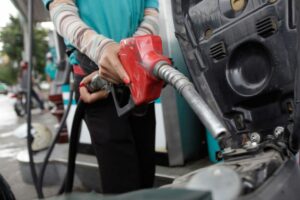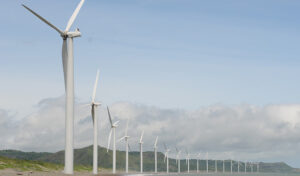Experts map benefits of alternative energy in face of future demand
Several reports have shed light on the benefits of renewable energy adoption in the creation of jobs and providing cheaper, cleaner electricity while reducing the risks associated with climate change.
The reports include “Renewable Energy and Sustainable Development in Southeast Asia: Challenges, Cooperation and Development Models” jointly produced by the Asian Vision Institute (AVI) and the Konrad Adenauer Stiftung (KAS) as well as Cambodia’s updated National Determined Contribution.
EnergyLab, which contributed a chapter to the AVI/KAS report, said publications like this are invaluable in highlighting the importance of renewable energy, particularly for Cambodia.
EnergyLab Cambodia Country Director Bridget McIntosh says that recently released government statistics show that in 2020 Cambodia imported more than a third of its electricity and that, by 2030, three-quarters of the nation’s energy needs will be met by imported electricity, coal or gas.”
This report, she said, shows how clean energy alternatives could change that path for the better by showing the benefits of adopting renewables regionally.
“Analysis from China’s switch to renewables shows generation costs could be reduced from $0.075 to $0.065/kWh by increasing solar from 3 to 28 percent and wind from 3 to 11 percent. Meanwhile, in Thailand, analysis shows the grid would be more stable because you have higher reserve margins and backup in storage, supporting the shift to renewables. Also, a study from the UNDP showed 2.5 times more jobs are created in renewable energy than by fossil fuels. The savings and opportunities of using clean energy are also being increasingly understood by factories where operators realize they can save on their electricity bills by installing solar for a portion of their energy.”
Subsequently, she said that although Cambodia has already taken admirable steps forward in the last few years, going from no solar on the grid in 2016 to many solar farms now built and supplying the grid, the Kingdom could gain a lot more by capitalizing on the aforementioned benefits that increased renewable investment and adoption could bring. Solar power will see more than 400 megawatts (mW) generated by 2021.
The need to adopt cleaner energy was also recognized in Cambodia’s recently updated National Determined Contribution, which details projected energy and climate change challenges from the dangers surrounding climate change.
It said that based on several international climate change indices, Cambodia is considered one of the most vulnerable countries to the impacts of climate change.
“The country is particularly vulnerable to floods, droughts, windstorms, and seawater intrusion. Climate change may reduce the country’s annual average GDP [gross domestic product] growth by 6.6 percent and absolute GDP by 0.4 percent in 2020, by 2.5 percent in 2030, and up to 9.8 percent in 2050. This may delay the Kingdom reaching upper-middle-income status by one year. Accordingly, Cambodia has begun working to develop a National Adaptation Plan based on the National Adaptation Programme of Actions.
“Cambodia’s vulnerability is characterized by frequent floods and irregular rainfall, coupled with an agrarian-based economy, limited human and financial resources, insufficient physical infrastructure, and limited access to technologies. Socio-economic status, location, access to resources and technologies all influence Cambodian’s ability to manage climate impacts. Different social groups experience climate vulnerability differently. Women, children, the disabled, the elderly and other socially marginalized groups are often hit harder,” it added.
Despite the evident importance of switching to climate change positive energy, the AVI/KAS report found that promoting energy efficiency, clean coal technology, nuclear safety, and doubling the share of renewables in the energy mixture while trying to attain inclusive and sustainable development goals will prove challenging.
It cited that emerging challenges stemming from rising fossil-fuel-based energy production, growing energy demands in industrial and service sectors relying on non-renewable energy sources, and constraints in financial cooperation within the region, particularly add to the difficulty.
The report added: “The role of energy will remain critical as the backbone of economic growth, with the bloc’s goals to increase the electrification rate and to ensure member countries’ energy security and sustainability. Nonetheless, the region’s huge potential for renewable energy production, including wind, solar, hydropower, ocean-wave energy, and biomass has yet to realize its full capacities of renewable energy production by 2050.”
However, the report explicitly stated that the region’s heavy reliance on non-renewable energy sources including coal, oil, and natural gas, and renewable sources such as biomass, wood, and charcoal in rural areas, will not be sustainable.
“The region’s growing demands for energy will have many implications at the national and regional levels. ASEAN has faced several energy challenges amid maintaining economic growth momentum while seeking to gain energy security, curbing climate change and reducing air pollution.”
The report found that the answer to the renewable energy demands of the future revolves around the dilemma of exploiting natural reserves of non-renewable resources to meet immediate and long-term energy needs, in the knowledge that more energy generation will be at the cost of natural resources and environmental quality.
“For sustainability, ASEAN needs to reduce its dependence on fuel imports and improve fuel use efficiency and conservation measures. Also, ASEAN will need to consider increasing the share of renewable energy in the total share of the energy consumption and the cleaner use of fossil fuel through clean coal technology and deployment of carbon capture, utilization and storage. To achieve energy security in ASEAN, it will need to depend less on imports of crude oil to reduce external shocks so as to make ASEAN more resilient to external shock and at the same time lower carbon emissions.”
The report continued: “The energy outlook for ASEAN will rely on energy resilience and green development strategy toward energy security. ASEAN’s green growth-based future will need to come from renewable energy as ASEAN is endowed with resource potentials such as wind, solar, hydropower, biofuels, and other renewable energy. ASEAN needs to find a framework to support the deployment of efficient and low carbon technologies. Technological development and financing mechanisms in renewable energy are key to reducing the lead time for sector deployment.” Khmer Times







